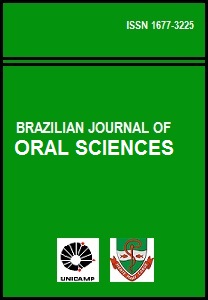Abstract
Aim: To evaluate the anatomical relationship between craniocervical posture and mandibular and hyoid bone position and the influence on the masticatory and swallowing functions. Methods: Thirty-six women aged 19 to 35 years without temporomandibular disorder diagnosis were evaluated. Variables related to the craniocervical posture and mandibular and hyoid bone position were obtained by cephalometric measurements. Masticatory and swallowing function evaluations were performed according to a protocol of orofacial myofunctional evaluation with scores. Results: Significant correlations were observed between craniovertebral angle and the linear distance from the hyoid bone to the mentum (p=0.02) and to the mandible (p=0.03). The angle that measured the forward head position also demonstrated a significant correlation with the linear distance between hyoid bone and jaw (p=0.00). The cervical curvature degree showed a significant correlation with the linear distance from hyoid bone to the third cervical vertebra (p=0.01). Modifications of the cranium base inclination in relation to the cervical column at the two levels (NSL/CVT and NSL/OPT) were the only variables, which showed a significant correlation with the mandible position. Important craniocervical postural changes were observed in the subjects, although there was no association between them and a higher frequency of atypical behaviors evaluated during masticatory and swallowing functions. Conclusions: Cephalometric findings confirm the anatomical relationship between craniocervical posture, mandible and hyoid bone. However, association between craniocervical posture alterations and masticatory and swallowing function impairments was not detected. Such findings suggest that, in the presence of a musculoskeletal imbalance, the body readapts itself ensuring that alimentary functions will not be affected.The Brazilian Journal of Oral Sciences uses the Creative Commons license (CC), thus preserving the integrity of the articles in an open access environment.
Downloads
Download data is not yet available.

